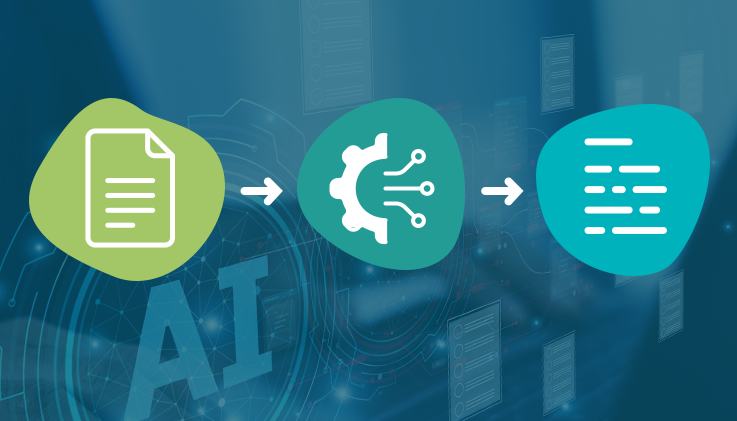Far too many industries began their online retail hustle after the onset of the pandemic. However, it is heartening to note that their efforts at digitalization are bearing fruit and still going strong.
Even more encouraging is that consumers have welcomed modernization and believe innovation in technology can fulfill society’s needs. How has this mindset shaped consumer behavior? What are some other factors influencing shopper sentiments? Does the global economic situation matter to the average shopper? How does it influence buyer behavior? Let us find out.
The global economy is on a downward spiral due to inflation, weighing down businesses and consumers. Inflation, along with a few other factors, has left a deep impact on the buyer’s mindset. What factors influence the average North American shopper’s behavior? Are they inclined to make purchases online? What is the size of the US eCommerce market? Its growth rate? How has the recent economic slowdown affected businesses and consumers? Can businesses reverse the damage, boost growth, and earn revenue by offering clients the ease and convenience of eCommerce?
This blog aims to answer these questions by examining PwC’s study of North American consumer behavior after the pandemic. The article shows how digitalization and offering eCommerce can help your brand stand out from the competition.
Also read: Roadmap To Usher Excellent Results In Customer Service
A study to understand the modern US customer and how it impacts CX
Price Waterhouse Coopers conducted detailed research to better understand the modern US consumer. The researchers aim to find out insights into customer behavior when making purchases online on eCommerce platforms.
Consumer outlook is influenced most by price, convenience, and the overall customer experience (CX) that is meted out to them. Besides these, there are a few other critical factors that shape client opinion. These are socioeconomic conditions, concerns over inflation and soaring prices of goods/services, availability of products/services, purchasers’ preference for certain brands over others, etc.
Although critical for determining the financial condition of enterprises, inflation hitherto has not been identified as a primary cause affecting buyer sentiments negatively. And that is about to change.
The impact of economic uncertainty on online retail
Studies tell us that consumers from the US have become hypersensitive to the prevailing global economic situation and prefer saving instead of splurging. Businesses, on their part, have accepted that overall consumer spending is slow and will continue like this for some time.
Having survived the pandemic, amid unprecedented lockdowns, food shortages, less than adequate public healthcare facilities, loss of employment opportunities, etc., the popular opinion of North American consumers is to curtail impulsive and non-essential expenditure.
The reason is inflation slows economic growth and puts consumables out of reach for the middle class and for those belonging to economically backward sections of society, besides depleting people’s savings.
At face value, consumers’ reactions to the economic downturn may appear prudent, and the right thing to do is to save money. However, there is an air of uncertainty about everything related to money—that is the grim reality. No one, not even experts, is sure when the economy will turn around; as a result, people have stopped spending, and businesses see an uncertain future ahead of them.
PwC’s 2023 global consumer insights pulse survey shows that 96 percent of consumers intend to adopt cost-saving behaviors. Given this, what can enterprises do to ensure their survival in this economy?
Survival motto for brands: Customer experience or nothing
Economic doldrums are not the only issue that is worrying entrepreneurs. Today, a brand's identity is not defined just by the products or services it offers. Instead, customers’ opinions and the quality of their overall experiences help companies make their own names.
CX is the foundation on which advertising, marketing campaigns, sales, customer retention, and online retail strategies are built. This is why customer experience is critical, and bad customer experiences must be avoided.
Nearly 7 in 10 customers discuss an efficient customer service experience with more than five people. On the flip side, an unsatisfactory customer experience spreads like wildfire and erodes brand reputation. However, for one reason or another, untoward incidents happen. Does that mean that brands perish without an opportunity to redeem themselves? Not quite.
Customers do not always look for feature-rich products or bargain low prices. These factors no doubt appeal to them and, on multiple occasions, trigger purchase reactions in them. However, this is not the complete picture. North American consumers are not just looking at fulfilling their needs when transacting with companies. They are looking for wholesome experiences that offer value.
Also read: Application of Artificial Intelligence in Customer Support
How macroeconomic conditions shape eCommerce
The PwC consumer survey report states that US customers increasingly turn to online retail for comfort and convenience. eCommerce is gaining from strength to strength. While footfall increased in brick-and-mortar stores exponentially after the pandemic, overall, customers have shown their inclination toward digital shopping.
Immediately after the pandemic, up to 50 percent of the population surveyed expressed their preference for eCommerce—the number fell to 43 percent the year after. Consumer interest in shopping at physical stores was modest at 30 percent in 2021. The number went down to 23 percent the next year.
Some of the factors that push customers towards retailers are the availability of knowledgeable and helpful sales associates, the availability of self-service checkout kiosks, scanning terminals for payments, and in-store entertainment, among others. Among factors that negatively affect shopping behavior are:
1) Rising prices for household goods.
2) Long queues at physical stores.
3) Limited range of available products and services.
4) Unavailability of choice products or few variants on offer.
5) Longer waiting times for availing products or services.
6) Drastic reduction in the quality of products or services provided.
Despite persistent economic and social headwinds, consumers are not readily switching from online to in-store shopping. Rather, they are choosing one or the other—or both—based on preferred attributes of each, such as in-store technology or faster delivery times and affordable costs for online orders.
The global economy is undergoing a digital transformation, and it is happening at breakneck speed. Traditional brick-and-mortar economic activities are being transformed by the Internet, the world wide web (WWW), and blockchain technologies on a global scale. Information technology is being used to create or adapt, market, or consume goods and services.
Manual (non-digital) processes are being replaced with digital ones, and outdated digital technology is getting replaced with upgraded digital technology. As such, in a digital economy like ours, providing multichannel customer support on eCommerce is imperative for increasing sales numbers and consolidating your brand's position in this competitive market.
But what about situations wherein businesses are prepared to extend their best services, but consumers are hesitant to loosen their purse strings and make purchases?
Does your online retail brand offer comfort, convenience, and value
Offering your customers a good product or good service is not going to be enough. Your customers want you to provide them with an EPIC experience (easy, personalized, intuitive, and contextual). To be able to do that, it is vital for you to know the true experiences of customers throughout their journey, in every lifecycle stage across every touchpoint and channel.
Whether you are a brand or a customer success professional, it is important that you should be well-versed with everything that your customer sees or experiences. You can capture customer thoughts and emotions using service design blueprints or on the customer journey map. Remember to pay a little extra attention when they switch between communication channels to ensure the information and context of their message are not lost.
You can keep up with customers as well as observe their persona throughout their journey by analyzing data captured on customer data platforms (CDP) or helpdesk software, tracking VoC, looking at CRM, going through complaints, interactions on social media, and scanning review websites or online customer forums.
Machine learning (ML) can be used to create fluid experiences through the analysis of customer behaviors at every touchpoint. This data will keep you informed of their choices for future interactions. Personalized recommendations and content powered by AI algorithms that analyze shopping patterns, preferences, feedback, and the behavior of customers should be used in your decision-making process to ensure clients get the ultimate value.
Good customer experience stems from trust
Customers, whether existing or prospective, only believe what a brand says if it matches with their experience or if the experiences of the people they believe in match the company's claims. Confidence turns into trust, which can turn into repeat business and even customer loyalty. Make it easy for customers to get their answers. Give them the experience they deserve—one that is easy, frictionless, and helpful. Put your customers first by
• Keeping your promises and going beyond their expectations.
• Listening to customers’ feedback and improving CX.
• Showing empathy. Putting yourself in their shoes.
In a perfect business relationship, trust abounds not just between the customer and the company but also inside the company and among employees. Trust enhances the overall experience of relationships. Today’s customers want a hassle-free experience on eCommerce. To ensure a successful outcome, the seller/service provider’s business goals must align perfectly with the customer’s demands.
eCommerce brands are perfectly poised to fulfill customer wants and expectations. They should make good use of this opportunity by providing consumers with the widest range of products and services. Additionally, online retail platforms must ensure the quality of CTAs on the website or mobile application is good, and they should be placed in areas of high visibility. Hence, they strive to be better than they were before. To do that, your brand must provide value to customers. Facilitating easy communication with team members from various departments and clients is imperative.
Use customer service software that is low code, cloud-based, easy to install, and helps you in mapping the customer journey. With appropriate usage of AI and automation, you can get access to data that helps reduce client churn and helps your brand exceed customer expectations. To experience the benefits of multichannel helpdesk software that facilitates communication between your eCommerce customers and team members and helps provide appropriate results to customer issues in the shortest time, try ThinkOwl. Sign up now for a 30-day free trial.













